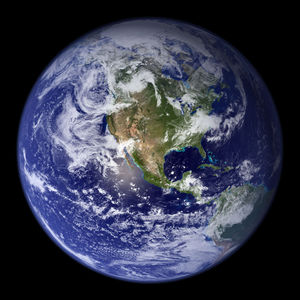Gravitational field

A gravitational field is a field induced by any object with mass, which will interact with other massive objects by applying a force on it. Gravitational fields are expressed in Newtons per kilogram (N/kg), which is the same units as acceleration. This means that any massive object present in another's gravitational field will accelerate towards it, and vice versa. The field of an object is given by the equation:[2]
where:
is the gravitational constant
is the mass of the object,
is the distance away from the center of the object
is the unit direction vector, pointing towards the object (which explains the negative sign)
is the acceleration due to gravity
From this equation it is simple to find out the gravitational field strength at the surface of the Earth: by plugging in the mass and radius of the Earth, it is found that (this value changes the further or closer one gets the the center of the Earth). This value means that all objects will fall at the same rate when present in the Earth's gravitational field (ignoring air drag).
Since the gravitational field of the Earth is conservative it must have a potential energy associated with it. This means that any object at a certain height from the surface of the Earth has a potential energy, which can be translated into kinetic energy as the object falls. Humans can make use of falling objects such as water to transform this potential energy into something useful, like electricity. Hydroelectric facilities make use of the moving water in a river in order to create electricity, which depends on this potential energy in order to operate.
References
- ↑ Wikimedia Commons [Online], Available: http://upload.wikimedia.org/wikipedia/commons/7/7b/Earth_Western_Hemisphere.jpg
- ↑ R. D. Knight, "Little g and Big G" in Physics for Scientists and Engineers: A Strategic Approach, 3nd ed. San Francisco, U.S.A.: Pearson Addison-Wesley, 2008, ch.13, sec.4, pp. 359-360

